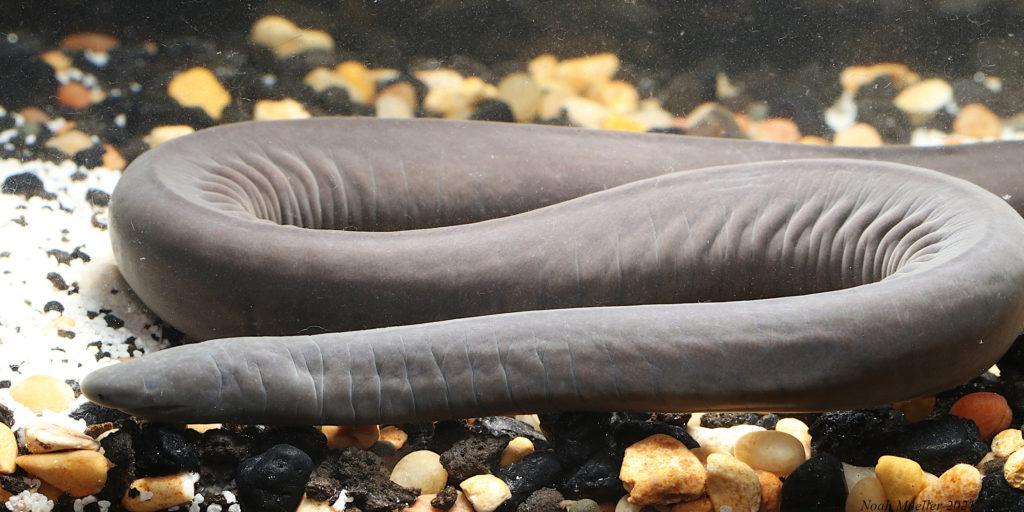Caecilians have just been discovered in Florida, U.S. According to researchers at the Florida Museum of Natural History, it was only until recently that caecilians were reported in Miami, Florida. The Rio Cauca, this particular caecilian, has not been spotted anywhere above Southern Mexico.
The caecilian was first spotted in shallow water as wildlife officials surveyed the C-4 (Tamiami) canal in 2019. They reported seeing a strange animal that resembled an eel. The animal recently died, and its body was sent to the Florida Museum for examinations, where scientists confirmed that it was a caecilian. Since then, other caecilians have been found in the canal.
Scientists are still unsure how widespread the amphibians are in the canal; hence are carrying out a few surveys to find out.
Features of the caecilian
Although Caecilians resemble snakes and worms, they are amphibians. They are also different from other amphibians, such as newts and frogs, because they are the only amphibian with venom glands. Caecilians can usually grow up to five feet long and have poor eyesight. They are also known to hunt small animals.
Most caecilians live underground. However, others such as the Typhlonectes natans species are found in freshwater.
According to Coleman Sheehy, the herpetology collection manager at Florida Museum, the caecilian is not a dangerous animal. For this reason, its appearance in the state does not worry scientists as it will likely eat small animals and be eaten by larger ones.
The caecilians found in the C4 canal could have been pets
About 170 million years ago, Caecilians were known to live in the American Southwest. However, there has not been evidence of the amphibian living so far in recent times. As a result, scientists are trying to determine how the animal could have made it to Florida.
Some scientists speculate that they could have been pets. Typhlonectes natans is the species of caecilians most kept as pets. They can survive and reproduce while in captivity. They might have been released into the canal by a previous owner where they are now breeding. The conditions in the canal would be favorable for caecilians as the water is warm and moves slowly.




